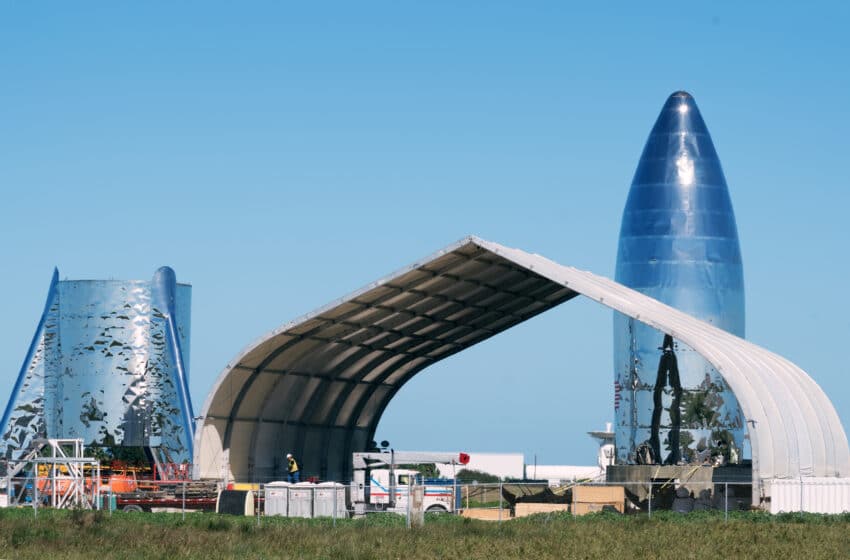Will Innovation Transform Texas?

How the Lone Star State Can Rocket to the Top
When SpaceX sent its SN8 Starship rocket into the blue skies over Boca Chica Beach along the Texas coast last December, space flight began to look a little different. It was a critical milestone toward the technology that could eventually take us to Mars. The flight generated enough data to be declared a rousing success.
That such an industry transformation is beginning in Texas won’t surprise any Texans. Innovation and invention are not new to us. Not only is Silicon Valley taking notice; many from there are joining us here, with Oracle being the latest example, announcing that it would move its headquarters from Redwood City, California, to Austin.
Many industry-changing innovations have their origin in our state. A Nobel Prize–winning Texas Instruments engineer invented the integrated circuit in 1958. The first successful heart transplant in the United States was performed at the Texas Heart Institute in 1968, and the horizontal drilling and hydraulic fracturing technologies of the 1980s and 1990s make Texas the star of the energy industry today.
I know what you’re thinking: Given all these Texan breakthroughs and the corporate giants we still attract, does Texas really need more transforming? After all, in the last decade, Texas has won more awards for job growth and healthy business climate than the other 49 states combined. US executives recently ranked Texas the number-one state for business for the eighth consecutive time. And by a wide margin—48 percent of survey respondents favored our business climate compared to second place Georgia’s 25 percent favor-ability.
Business Facilities released its 16th annual state rankings in 2020, with Texas leading as the state with the best business climate, a repeat of 2019 and a record-breaking fourth consecutive State of the Year award. Not to be outdone, Area Development presented Texas with a 2020 Gold Shovel for achievement in attracting high-value investment projects that will create a significant number of new jobs in its communities.
These aren’t hollow accolades. Corporate relocations and expansions continue at a record pace.
So, yes, it’s easy to argue that we’re doing just fine in our drive to welcome business. But hear me out: There’s always room for improvement, and increased innovation—on top of what we’re already doing—is the formula to get there. It’s the rocket fuel for our economic growth. Resting on our laurels would not be wise.
When it comes to directly sponsoring innovation, Texas again does a lot of things right. We have public sector organizations like the Cancer Prevention and Research Institute of Texas (CPRIT) that serve as national models. The Governor’s University Research Initiative (GURI) and The Academy of Medicine, Engineering & Science of Texas (TAMEST) are hubs for the brightest minds in the country to create and innovate. A robust innovation economy starts with a strong research base, and these are solid building blocks.
Research is not enough to change the world. We must better commercialize and scale our research results for impact.
Bob Metcalfe, UT Austin Professor of Innovation
Our friends at Merriam-Webster tell us that innovation can refer to “the introduction of something new” or to “a change made to an existing product, idea, or field.” No matter what form it comes in, innovation fosters a competitive economic ecosystem and drives growth. But as UT Austin Professor of Innovation Bob Metcalfe—an inventor of Ethernet, no less—has said: “Research is not enough to change the world. We must better commercialize and scale our research results for impact. That starts by showing up and educating ourselves on all forms of innovation.”
Innovation is the primary currency of economic growth, and while the contributions of heroic entrepreneurs and pioneering companies are important, economically relevant innovation—on a regional scale—is mostly the product of robust and efficient innovation ecosystems.
Among industrialized nations, the ability of regions to swiftly create new ideas and transform those ideas into high-growth companies is the key determinant of regional wealth creation.
Notably, even Texas public education is getting in on the act with Districts of Innovation. Big companies like Dell, IBM, Toyota, and Rackspace are partnering with school districts and offering technical training to high school students so they’ll be prepared to fill the jobs these companies are creating.
Smaller companies like Texas-based Bresatech are reinventing the digital transformation journey for large companies like Amazon and Apple, and in the public sector in Florida and Texas, through a “centered out” design approach to minimize the trappings and risk of the most common mistakes an organization makes. Meanwhile, market-leader Synexis has partnered with Trane Technologies to install its breakthrough, proprietary Dry Hydrogen Peroxide technology in K–12 schools to continuously improve indoor environmental quality and reduce pathogens in the air and on surfaces.
Clearly, Silicon Valley doesn’t have a lock on the next big thing in innovation and rapid-scale industries. While California’s tech companies innovate mostly with bits of information, Texas innovators tend to do so with actual atoms—microcircuits, aortas, shale deposits, batteries, and immune systems. Those last two won Texas scientists Nobel Prizes.
As Metcalfe has observed, commercializing research—taking inventions from the mind to the marketplace—still needs to improve in Texas. We need to win increased federal investment in Texas research, to expand access to venture capital, and to improve our research centers. By doing so, our state will more quickly span the various valleys that keep successful research from going to scale in world markets.
But we’ll get there—Texas always does. Who’s got next?






